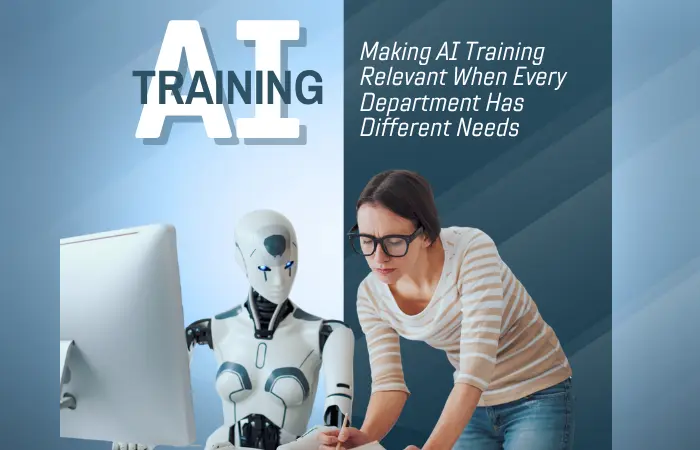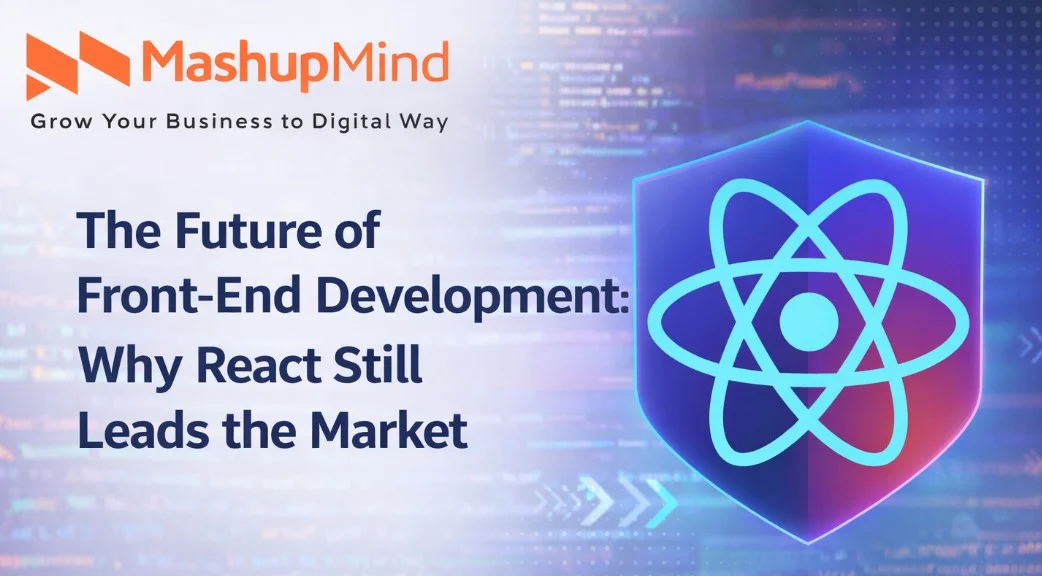It’s the same story for almost every company when it comes to AI training: marketing seeks automation for customer-generated content, finance wants a better forecasting model, operations is overwhelmed with manual processes, while IT is debating security protocols. Why do they all come to the same workshop? Because they all have different problems, different levels of tech understanding, and different outcomes they hope to gain from learning.
The standard method – bring everyone into the room together and teach them the same curriculum – results in half the room bored to tears while the other half struggles to keep up. Marketing teams don’t need to understand how to build a neural network architecture; data analysts in IT don’t need an introductory course on what AI even is. Yet for some reason, departments are lumped together into a non-tailored approach with the expectation that everyone has the same training needs.
Why “One Size Fits All” Doesn’t Work
It’s not just about the varied use cases at play here. Different departments are operating at massively different technological comfort levels. A software development team likely already knows what an API is, data structures, and algorithmic thinking; they might be ready for advanced implementation strategies on day one. Meanwhile, human resources may need to start from scratch, hearing about how AI makes decisions and what kind of decisions it can reasonably make before getting into even task-based use cases.
There are also immediacy needs. People learn better when they can apply what they learn as soon as they leave the training. Sales teams who are forced to sit through a presentation on how AI can optimize supply chain management will mentally check out – even if the training is relevant and presented in an engaging way – before they learn how it impacts their pipeline management, client communication, and forecasting accuracy.
Finally, there’s language: it’s not about translation but how different departments talk about what they’re doing. Marketing uses phrases like customer journey and conversion funnel; finance uses terms like variance analysis and cash flow projections; operations focuses on throughput and bottlenecks. Effective training needs to speak all of these languages while also teaching them the same concepts about AI.
Foundational Knowledge Everyone Will Need
However, despite these differences, there are common concepts that all teams, regardless of what their day-to-day looks like will need before diving into AI use. The challenge lies in delivering this foundational knowledge in a way that feels applicable in the context of each group’s specific purpose.
Every team needs to understand what AI can and cannot do reliably. This is a basic concept, but it’s where most implementations go wrong. People either oversell the capabilities of AI solutions and become disappointed or undersell what’s possible and miss opportunities. Understanding the constraints of technology allows every department to set expectations for itself as well as identify use cases where AI can be best applied.
Data literacy is applicable to all teams, although some marketing teams will not need to write SQL queries but should at least comprehend that the output of AI (e.g., written articles) is only as good as the input (data). Finance may need a deeper level of understanding around data prep, but customer service needs to know how training data affects how well an AI-generated response can answer their customers’ inbound inquiries.
Universal knowledge is important when it comes to risk awareness. There are potential pitfalls that every team should be aware of: bias in recommendations, customer data privacy considerations, reliance on an automated solution that removes a human touch, and implications of oversight versus lack thereof. While these might present differently (e.g., biased hiring algorithms in HR vs discriminatory pricing in sales), the sentiment remains across the board.
Cohesive Paths to Learning Inside a Common Training
One notable solution that companies have succeeded with is an AI training workshop that teaches everyone together for part of it and then breaks people into groups for their specific departments. This way, a common language is established first before focusing on specific needs through hands-on application.
The universal session features how AI learns from data, what types of AI tools exist, what’s realistic (or not), and risk factors involved. Ensure this segment is conceptual rather than technical; use anecdotes from multiple departments so that people feel a connection to at least some of what’s being shared.
Then break it down into sessions specific to that type of department’s work. Marketing should see how AI can generate content, target ads, and create customer clusters; finance should learn about fraud detection automation, forecasting abilities, and reporting features; operations should focus on process optimization through predictive maintenance and quality assurance.
Hands-on applications with relevant tools should accompany these sessions – marketers play with AI content generation or image rendering; finance plays with collaborative forecasting templates or forecasting builders; customer service plays with chatbot creation. Abstract concepts become real when people get to actually try out the tools they’ll have available for day-to-day use.
Customizing To Depth Without Confusion
The difficult part is making sure teams understand varying degrees of depth without talking down to anyone or overwhelming them. Determine where they’re at – not only with AI but with any technology implementation. For example, if software teams are already using advanced analytics tools for other needs, they’ll appreciate a deeper dive into explaining how the machine learning algorithm layers can find patterns.
On the other hand, if HR still relies heavily on manual processes or has less tech-savvy people employed, they’ll need a gentle approach for the human side before diving into specifics that’ll bore them and make them frustrated.
The language matters here, too: don’t dumb down the concepts – explain them through accessible terminology. When teaching finance about ways AI can forecast trends, relate it back to concepts they’re already familiar with (e.g., linear trend analysis versus exponential). For HR, relate findings back to retention vs recruitment challenges they are accustomed to having without any tech involvement.
Some teams need deeper dives into certain components; legal/compliance will want thorough coverage about risks/legalities/audit trails; IT will need enterprise-level implementation considerations that other teams don’t necessarily need.
Keeping It Relevant After The Workshop
Finally, the biggest failure is not what’s given during the training, but what’s done after. People leave energized and impressed, only to be greeted with deadlines upon returning to their desks that hamper any exploration of new tools.
Implement department-specific resources following the workshop; marketers should receive a library of general prompts for their most-asked-for tasks; finance needs templates they’ve learned about so they can recreate their own structures; every team needs support materials relative to how they implement what they’ve learned.
Regular check-ins are helpful, but they should be department-specific rather than all-company; a monthly marketing meeting where people debrief about what they’ve tried with AI and troubleshoot those challenges together is more productive than quarterly department updates that are rarely relatable across the company.
Recognizing champions within each department could also help – someone who gets slightly deeper training and becomes their go-to resource for any questions within their team. They don’t have to be highly technical; they just need enough knowledge to answer basic questions and help escalate which problems are worth pursuing further.
Flexibility To Adjust As Departments Change
Finally – AI training shouldn’t be a one-time event. As departments start using tools, their inquiries become different down the line. A month’s training solely focuses on “what is this and how do I get started,” but three months later it becomes “this isn’t doing what I thought it would do; why?”
Ensure ongoing resources through monthly lunch-and-learns/refresher classes/online libraries/resources to consultants for specific questions help keep momentum going across the board. Some departments will go faster than others – and that’s okay. Let early adopters speed ahead as others take time figuring things out.
The goal isn’t to get every department trained on the same level of AI sophistication – it’s to ensure each team has enough knowledge capital under their belt so they can implement AI for what they do best (and what it’s designed to do best) while recognizing opportunities/risks and knowing where they can get help on the journey.







